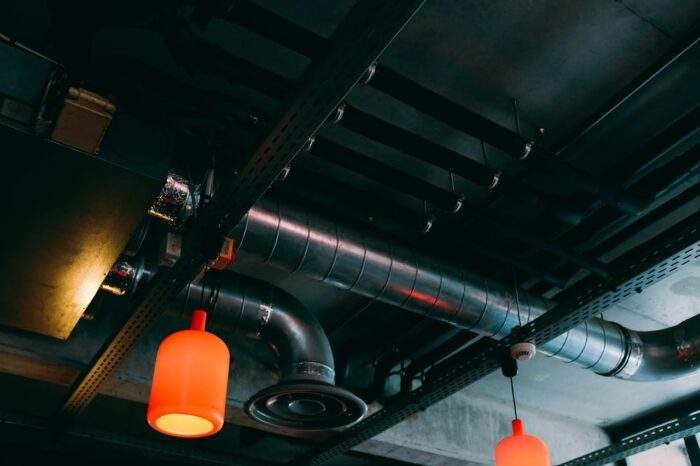A Comprehensive Guide to Central Ducted Heating and Cooling Systems
Key Takeaways:

- Discover how central ducted systems can improve home comfort efficiently.
- Learn about the different types and benefits of central ducted solutions.
- Gain insights into how these systems differ from other HVAC options.
- Explore cost-saving tips and maintenance advice for longevity.
Table of Contents
- What Are Central Ducted Systems?
- Types of Central Ducted Systems
- Benefits of Central Ducted Heating and Cooling
- Comparing Central Ducted Systems with Other HVAC Options
- Installation Considerations and Costs
- Energy Efficiency Tips
- Maintenance and Troubleshooting
- Future Trends in Ducted HVAC Systems
- Conclusion
Introduction
Choosing the proper heating and cooling system for your house can be difficult with many options. Ducted heat pumps are gaining popularity as an efficient solution for maintaining consistent indoor comfort. As the backbone of modern climate management in residential settings, these systems have much to offer beyond mere temperature control. By demystifying central ducted systems, this guide gives you the knowledge to make decisions specific to your house’s temperature control requirements.
What Are Central Ducted Systems?
To provide uniform and effective climate control throughout a building, central ducted systems distribute heating and cooling over a vast network of ducts. These systems leverage a central thermostat and an air handler with ducts strategically placed throughout the home. A central heating source—often integrated with a cooling component, such as an air conditioner or heat pump—ensures every room remains comfortable regardless of external weather conditions. Central ducted systems meet the various climatic requirements of residential and commercial spaces by preserving a constant indoor environment.
Types of Central Ducted Systems
Two primary types of central ducted systems are considered: single-zone and multi-zone. Single-zone systems are best suited for smaller spaces or homes where a uniform temperature is desired throughout. This means all building areas are maintained at the same climate levels, a perfect match for those who prefer simplicity and consistency. Conversely, multi-zone systems give distinct regions of a structure customized heating and cooling. This flexibility is ideal for larger homes or those with varied occupational habits, allowing energy savings as heating or cooling can only be supplied where needed.
Benefits of Central Ducted Heating and Cooling
Investing in a central ducted system offers numerous advantages that exceed mere comfort. Firstly, they improve air quality by circulating filtered air consistently through living spaces, reducing allergens and airborne particles. They also tend to be more energy-efficient than many standalone systems, equating to significant savings on energy bills over time. Moreover, the centralized control allows you to maintain a precise temperature, enhancing comfort while eliminating the hassle of adjusting room-specific units. As a long-term investment, these systems can provide lasting benefits, including increasing the resale value of your property.
Comparing Central Ducted Systems with Other HVAC Options
Compared to ductless or split systems, central ducted systems demonstrate unique strengths. While individual units shine in zoning capabilities and are often easier to install, ducted systems deliver thorough air distribution and consistency across larger areas. This makes them remarkably advisable for homes in climates with significant temperature volatility, where maintaining a stable internal environment is imperative. Additionally, ducted systems can operate more quietly and seamlessly than those with visible indoor units, contributing to an unobtrusive home environment.
Installation Considerations and Costs
The installation of central ducted systems demands careful consideration, as they can significantly vary in complexity and cost based on the building’s structural attributes and the specific system design. Conducting a professional evaluation is crucial to determine the ideal type of system and its integration process. While initial installation costs seem substantial, there are opportunities for offsetting expenses via energy efficiency rebates and tax incentives designed to encourage eco-friendly choices. These can markedly reduce the financial burden of a new installation.
Energy Efficiency Tips
Implementing simple practices can significantly enhance the efficiency of central ducted systems. Installing a smart thermostat allows precise control over temperature settings, adapting heating and cooling patterns according to usage habits, which promotes energy savings. Additionally, ensuring thorough insulation in your home prevents conditioned air from escaping, enhancing the system’s performance. Even as simple as examining duct connections for potential leaks, routine maintenance checks ensure your system functions at peak efficiency, further conserving energy and reducing costs in the long run.
Maintenance and Troubleshooting
Regular maintenance ensures a ducted system’s optimal performance and longevity. Simple tasks, such as regular filter replacement, help maintain air quality and system efficiency. Duct sealing is another key maintenance activity to prevent air leakage. Homeowners should also schedule annual professional inspections to identify and address issues like debris buildup or mechanical wear early. Knowing when to call a qualified technician can prolong the system’s life and prevent costly repairs caused by neglected components.
Future Trends in Ducted HVAC Systems
The HVAC industry continues evolving swiftly, with innovations enhancing functionality and sustainability. Integrating innovative HVAC systems with home automation technologies revolutionizes the user experience, improving operational efficiency and control via sophisticated automation and data analysis tools. In pursuing environmental consciousness, these innovations emphasize reduced energy consumption while maximizing user comfort. As technology progresses, ducted systems are expected to adapt further, potentially incorporating renewable energy sources to align with global sustainability goals.
Conclusion
Investing in a well-designed heating and cooling system enhances indoor comfort, energy efficiency, and long-term cost savings. Regular maintenance, including filter replacements and system inspections, ensures optimal performance and longevity. Understanding the benefits of zoning, smart thermostats, and proper insulation can improve efficiency while reducing energy costs. Whether upgrading an existing system or installing a new one, informed decisions help homeowners maximize their investment. Consulting professionals for expert guidance ensures the system is tailored to household needs. An excellent addition to any home, a well-maintained and effectively run system offers year-round comfort.







